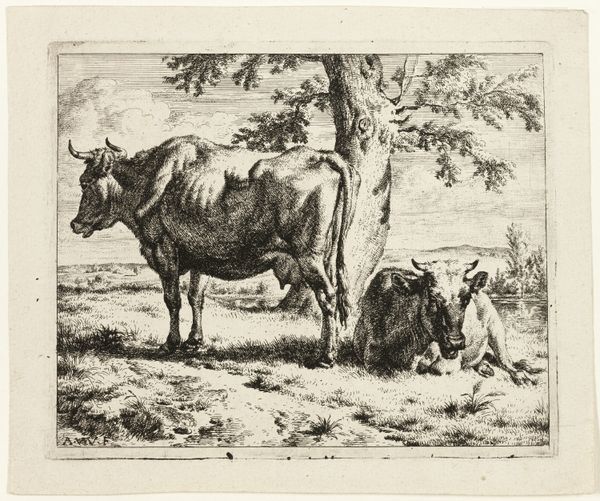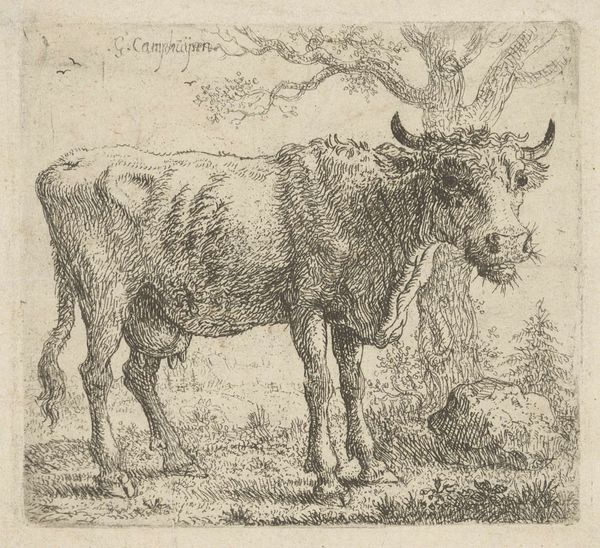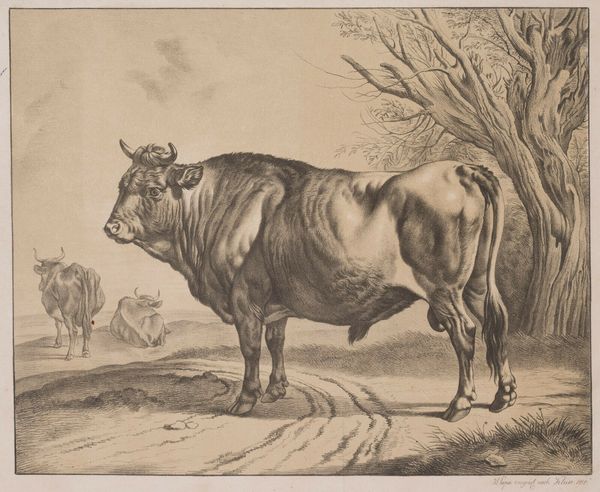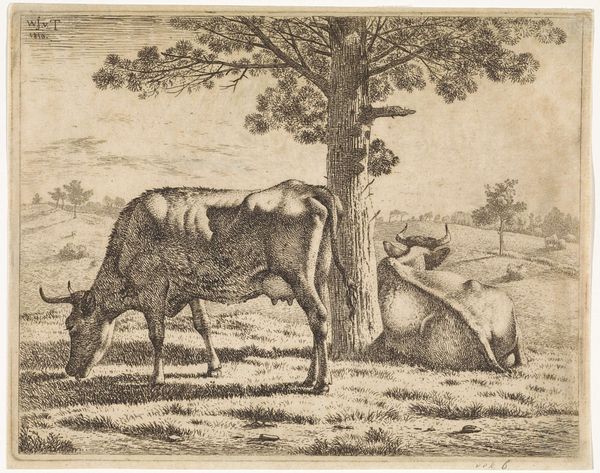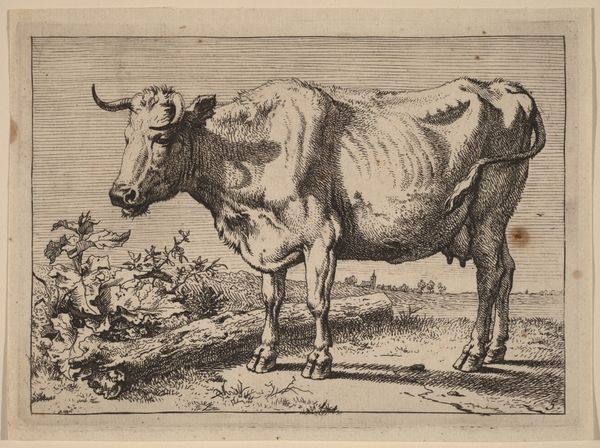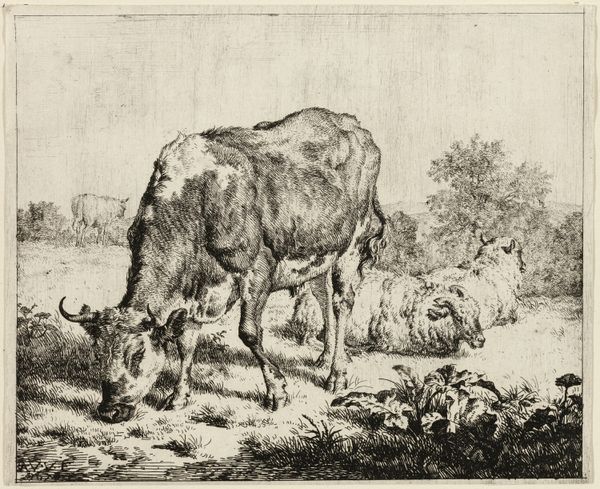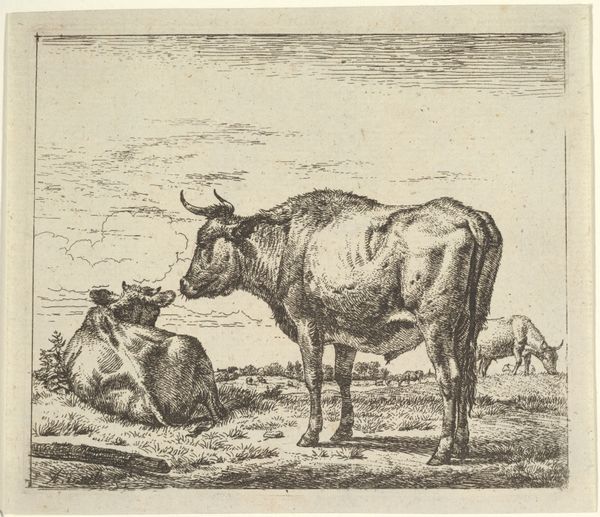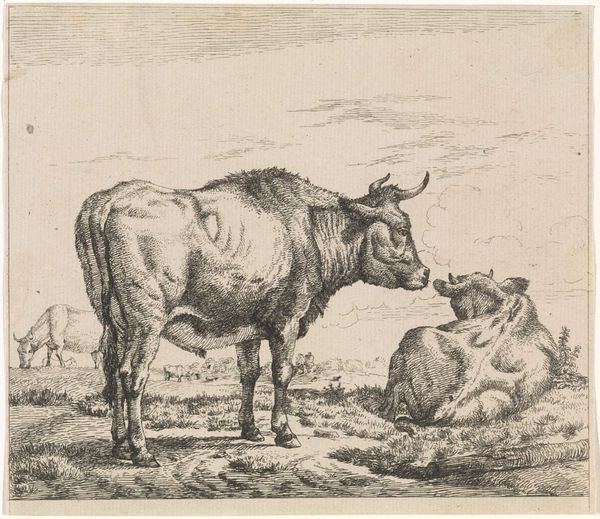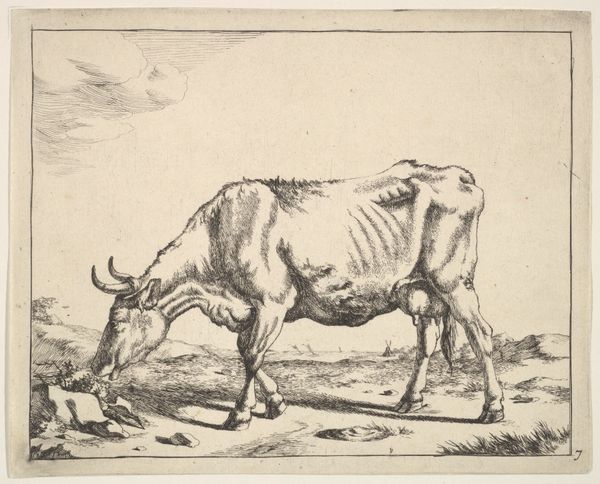
print, etching
#
baroque
#
animal
#
dutch-golden-age
# print
#
etching
#
landscape
#
figuration
#
genre-painting
#
realism
Copyright: National Gallery of Art: CC0 1.0
Adriaen van de Velde made this etching, of a cow and two sheep, using a metal plate, acid, and ink. Etching allowed artists to create detailed, reproducible images, making art more accessible. Look closely, and you'll see the lines van de Velde etched into the plate, defining the forms of the animals and the landscape. The ink settles into these lines, transferring the image to paper. The texture of the print, the slight imperfections, all tell of the hand-made process. In van de Velde’s time, the Dutch economy thrived on agriculture. Cows and sheep weren't just animals; they were commodities, symbols of wealth. This image reflects a society where the value of labor and land was becoming increasingly important. By focusing on the materials and processes of this print, and the socio-economic context of its creation, we gain a richer understanding of its cultural significance. It challenges the traditional separation of art from the everyday, reminding us that even a simple pastoral scene is embedded in a complex web of labor, materials, and exchange.
Comments
No comments
Be the first to comment and join the conversation on the ultimate creative platform.

